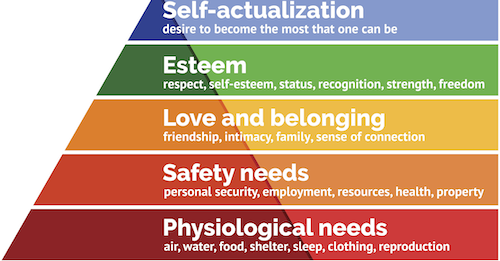
Our Key Learnings From Year One As A Bootstrapped Company
Last week we hit the twelve month mark at Change State. We’d be lying if we told you the
Change State is now part of Recruitics! Learn more
In an earlier post, we covered the power of generating an Employer Brand Perceptual Map as a strong foundation upon which to build your employer brand value proposition. By combining what’s important to employees when choosing an employer (also called employer brand decision drivers) with your brand’s perception on these same dimensions, you can quickly identify your brand’s core strengths and weaknesses, which are crucial inputs for answering the most fundamental question underpinning any EVP activity:
This question appears quite simple on the surface, but in reality can become complex quickly as you begin thinking about the different aspects or “dimensions” of your employer brand. On the surface, we have functional attributes that most everyone cares about: compensation, benefits, schedule, commute time, PTO, etc.
The rank order of importance of these dimensions may vary from employee to employee, but because most people expect their employer to be at least somewhat competitive on these functional dimensions, we sometimes refer to them as “table stakes” – a reference to the minimum buy-in required to sit down at a poker table. As applied to talent acquisition, these are in some sense the minimum “buy-in” required of employers who hope to attract talent in a given industry and market.

Typically these functional dimensions sit near the bottom of Maslow’s hierarchy of needs, most often in the “safety” level, which includes things like personal security, employment, resources, health and property.
Although it’s not impossible to create a strong (that is, differentiated + authentic) employer brand based on these foundational needs, it tends to be much harder because the needs are so basic that most companies meet them to some degree or another. Thus the only way to stand out against rival employers is to offer significantly more than your competitors on a dimension like compensation, which for understandable reasons, the C-suite is often reluctant to do.
For established brands with a clear purpose, the obvious solution is to define your EVP based on higher order needs, starting with “love and belonging,” proceeding all the way up to the level of self-actualization. The few brands who are able to reach this apex are competitive and attractive to employees on all the supporting levels below, while also strongly aligning with the individual employee’s personal sense of purpose. For instance, a brand like Apple may offer competitive compensation and benefits packages, but it’s no coincidence their career site leads with a message squarely focused on self-actualization: “Join Us. Be You.”
In general, reaching this coveted land of self-actualization is easier for established, purpose-led employers with a strong mix of entry-level (hourly) and highly skilled (salaried) positions. Salaried workers tend to be further along in their careers (and on their journeys up Maslow’s hierarchy), and entry-level workers see plenty of room to grow towards self-actualization without having to leave the organization.
But what about organizations comprised primarily of entry-level workers, with limited opportunities within the organization to grow? Common examples include big box retail, call centers (BPO’s), and quick service restaurant chains. Sure, some employees will stay at these companies for decades, growing from a front-line worker to a corporate director or higher, but these are the exceptions, not the rule. The vast majority of these frontline workers take the job for one or more functional benefits (e.g., a paycheck), as a kind of “stepping stone” between one life chapter and the next. How can such organizations identify meaningful recruitment marketing messages likely to resonate with their target talent?
At Change State, we encourage our clients in these types of organizations to start by identifying their most satisfied employees. This can be done a variety of ways, but most often through a quick employee survey. What do we mean by “satisfied”? Again, definitions and approaches vary from organization to organization, but generally fall into two buckets: attitudes and behaviors.
Attitudes include things like Employer Brand NPS, satisfaction scores, and perceptions of the organization and its leadership. The idea here is simple: if we can understand how our most satisfied employees are different from our wider employee population in terms of life stage, expectations of their employer, and perceptions of our company in particular, we can use these insights to craft recruitment marketing messages that will attract talent likely to be similarly fulfilled by what we offer.
Attitudes are an obvious place to start, and work well for many organizations, but in certain industries, behaviors are even more powerful. Consider the world of BPO’s, where annual attrition rates can be 200% or higher. Are all of these employees leaving because they are deeply unsatisfied with the experience? For some subset, sure. But there’s likely a significant population of satisfied employees who leave for reasons that have nothing to do with the company or their employee experience: going to college, getting married, career advancement, moving to a different city, etc.
In these businesses, behaviors (that is, what people do, not simply what they say) can be particularly useful because they cut through these confounding variables. Instead of asking, how are our most satisfied employees different, we ask: how are our most tenured employees different? If we can understand the persona of the employee who stays with the organization considerably longer than average, we can use these insights to attract talent who is likely to do the same.
The results of this type of activity have profound implications for recruitment marketing messaging, advertising, and community partnerships. For example, if you find your longest tenured employees are mostly single mothers, you may want to consider adjusting your career site messaging to focus on flexible schedules that support mothers on-the-go. You might also consider partnering with local daycare centers, or family-centric non-profits as a way of creating additional talent pools.
If, on the other hand, you find that your most fulfilled workers are college students who work remote and return to their jobs on summer breaks, a completely different strategy – one focused on campus outreach with messaging around “your job will be waiting for you” – may be in order.
In practice, organizations often find they have multiple “personas” of satisfied (or tenured) employees to work with, each with its own flavor of outreach and messaging. By using these personas as templates for attracting future talent, organizations are better poised to speak to talent wherever they live on the hierarchy of needs.
Questions about how to use employee personas to optimize your recruitment marketing efforts? Contact us today.
Share On:
suggested articles

Last week we hit the twelve month mark at Change State. We’d be lying if we told you the

Discover how consumer and employer brands influence each other, and why investing in both is crucial for sustainable growth.

In our recent blog post, “How Generative AI Is Shaping the Future Workforce”, we explored how AI is transforming
Software Solutions
Copyright © 2025 Charge State. All rights reserved.
Software Solutions
Copyright © 2025 Charge State. All rights reserved.